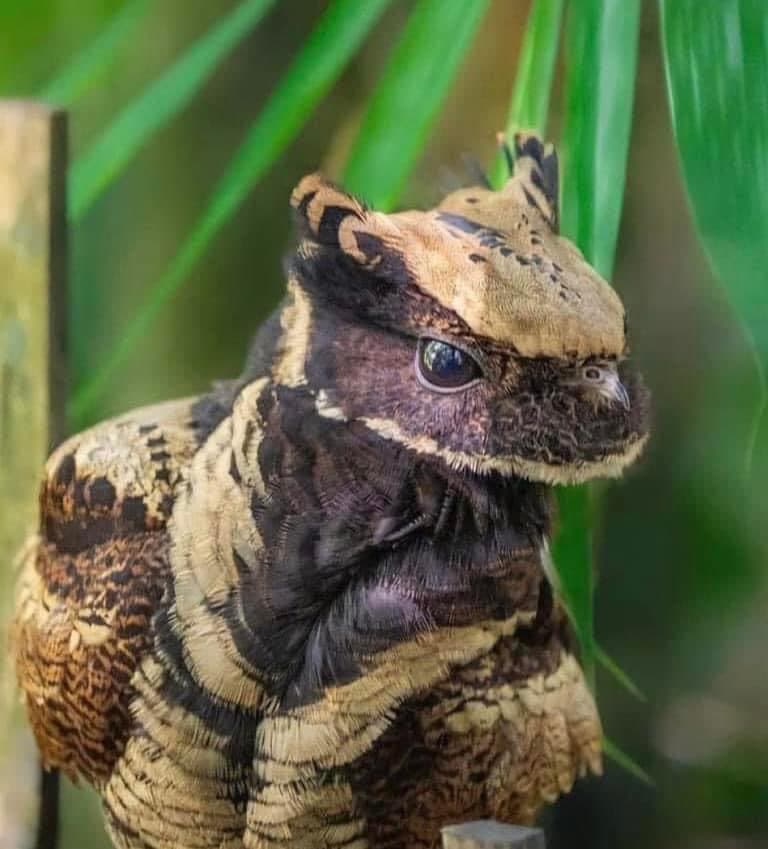Nightjars (ពព្លាក់) are very fascinating birds with quite a distinctive appearance, and we have 5 nightjar species in Cambodia. The thing is that they are not widely known here, especially in the city as they are forest birds. Nightjar has a wide range of habitats but some species are threatened with extinction. Today, we are going to talk about nightjar species in Cambodia so let’s see if you know any of them.
Gray Nightjar (ពព្លាក់ជុក)
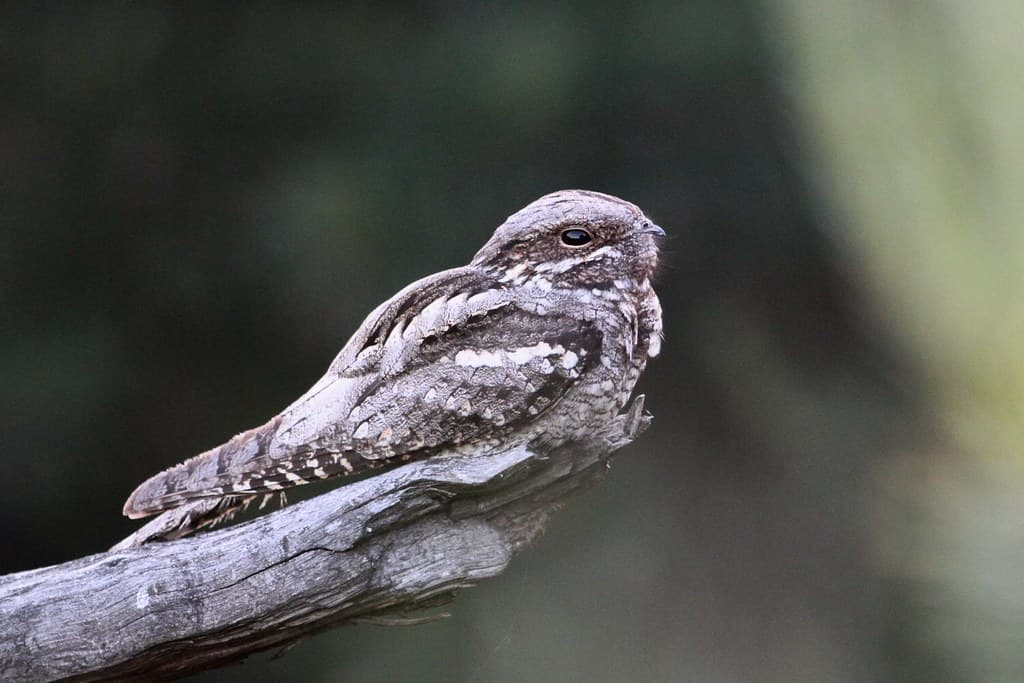
A gray nightjar is a small bird that grows to around 28 to 32 centimeters in length. It has a dark and grayish color with heavier black vermiculation on the upperparts and a small white throat patch. The birds have long wings, short legs, small feet, and very short bills. Gray nightjar is a nightjar species from East Asia but it also has a distribution in Southeast Asia as well. These birds inhabit dense evergreen primary and secondary forests, hillside forests, and open scrub forests. At the same time, they also live in foothill forests, submontane forests, subtropical and tropical mangrove forests, and temperate forests. They are nocturnal, and they are more active during twilight when they hunt for food. Their common meals are flying insects like bees, beetles, cicadas, flies, flying ants, grasshoppers, locusts, moths, and wasps.
Great Eared Nightjar (ពព្លាក់ធំ)
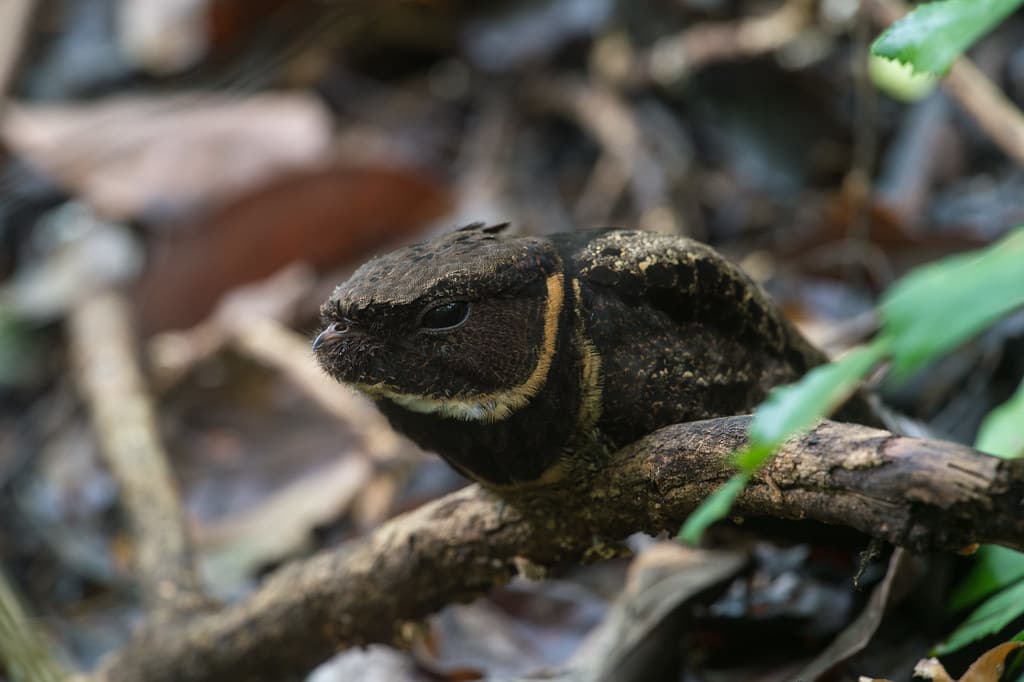
Probably one of the most well-known nightjar species, great eared nightjar has a very fascinating appearance. It is a large nightjar that grows from 31 to 41 centimeters in length, and it looks like a mini dragon at a glance. This bird has a large mouth for a small face, and that is one of the things that makes it unique. A great eared nightjar has golden plumage on top of its head that looks like cute ears. The most interesting thing is that these ear tufts can be lowered or raised at will, making the birds even more adorable. Its overall plumage is a mottled mix of brown, gray, and white that offers flawless camouflage in its environments.
Great eared nightjar lives in both South and Southeast Asia, inhabiting moist lowland tropical forests and subtropical forests. Across their range, they usually hunt in the air as they feed on flying insects like beetles, moths, and more. They are active at dusk and night, and they are notable for their super haunting calls. It also has huge round eyes with excellent night vision that also reflects visible light back for hunting at night. This feature is very common in nocturnal animals such as cats, crocodiles, and fruit bats. Plus with their short but wide beak, catching prey mid-flight is a piece of cake.
Along with that, these nightjars also have a very strange incubation habit as they do it on the forest floor. They lay one egg at a time and guard it for around 4 weeks while camouflaging to avoid predators. Their common predators are crows, dogs, foxes, owls, and snakes. Besides these, their primary threats is habitat loss due to deforestation and land conversion for agriculture and urban development.
Indian Nightjar (ពព្លាក់តូច)
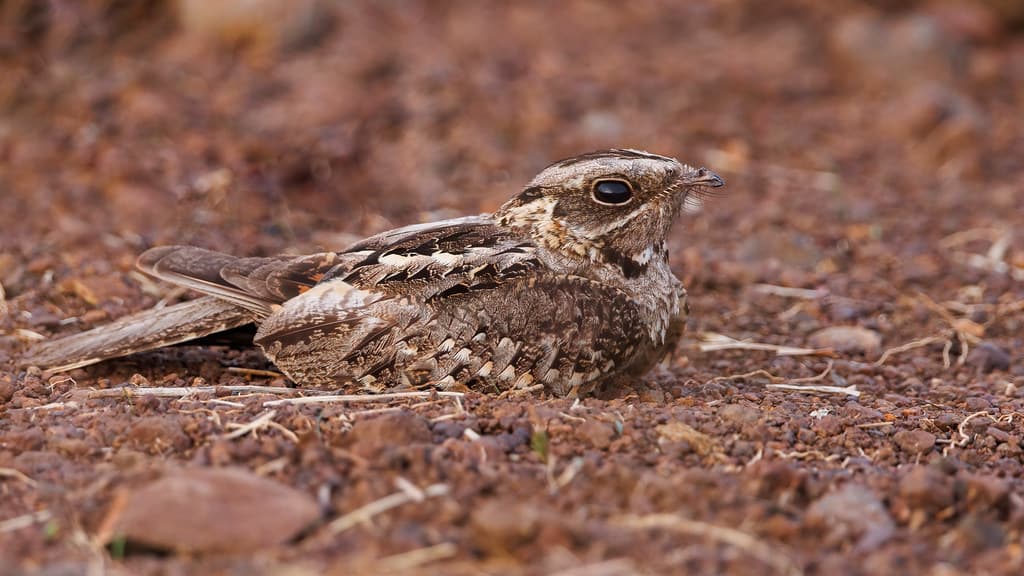
The Indian nightjar is one of the small members of the nightjar family, growing to only around 20-25 centimeters. This small bird has a golden collar and nape, dark cheeks, and a short tail with white corners. It has a gray crown with brown barred breast, and its overall coloration provides a perfect camouflage in its habitats. Plus with the leaf litter, rocks, and soil, these nightjars can easily blend in to avoid predators even in plain sight.
Speaking of habitats, this nightjar species mostly live in cultivation, open woodlands, and scrubs where they usually sit on the ground. Their range is across South and Southeast Asia, mostly in Afghanistan, Cambodia, Indian subcontinent, Iran, Laos, Myanmar, Thailand, and Vietnam. They do not make any nest, they simply lay their two eggs on the bare ground. Where they live, the Indian nightjars feed on insects swarming around the animals near dawn and dusk.
Large-Tailed Nightjar (ពព្លាក់ចង់)
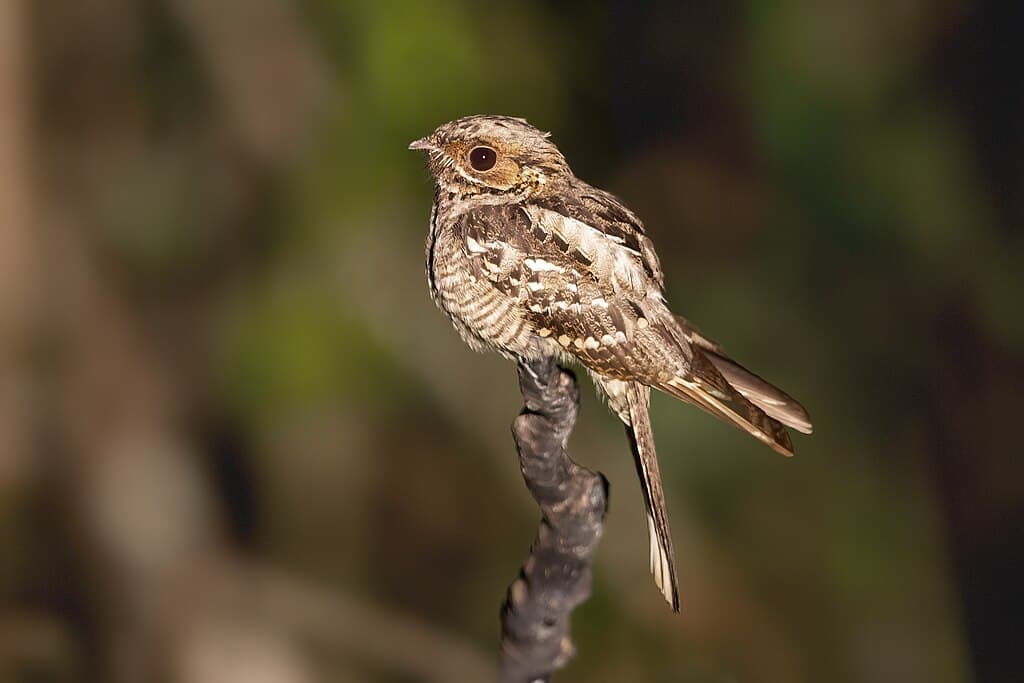
Here we have another large nightjar species that grows to around 31.5 to 33 centimeters. Males have a pale crown with dark median stripe, and a prominent row of black scapulars with broad buff outer fringes. Females are paler and grayer on the upperparts and breast, and they have smaller buff. The plumage of both sexes resembles dry leaves, sandy ground, or tree bark to allow for camouflage in their surroundings.
Large-tailed nightjar lives along the southern Himalayan foothills, eastern South Asia, Southeast Asia, and northern Australia. Their natural habitats are subtropical or tropical mangrove forests, subtropical or tropical moist lowland forests, and subtropical or tropical montane forests. They also live in deciduous forests, degraded forests, fallow agricultural fields, farmlands, open evergreen forests, parks, plantations, and rural gardens. Across their range, they feed on large insects like beetles, cicadas, grasshoppers, locusts, moths, and wasps.
Savanna Nightjar (ពព្លាក់ជូវុិច)
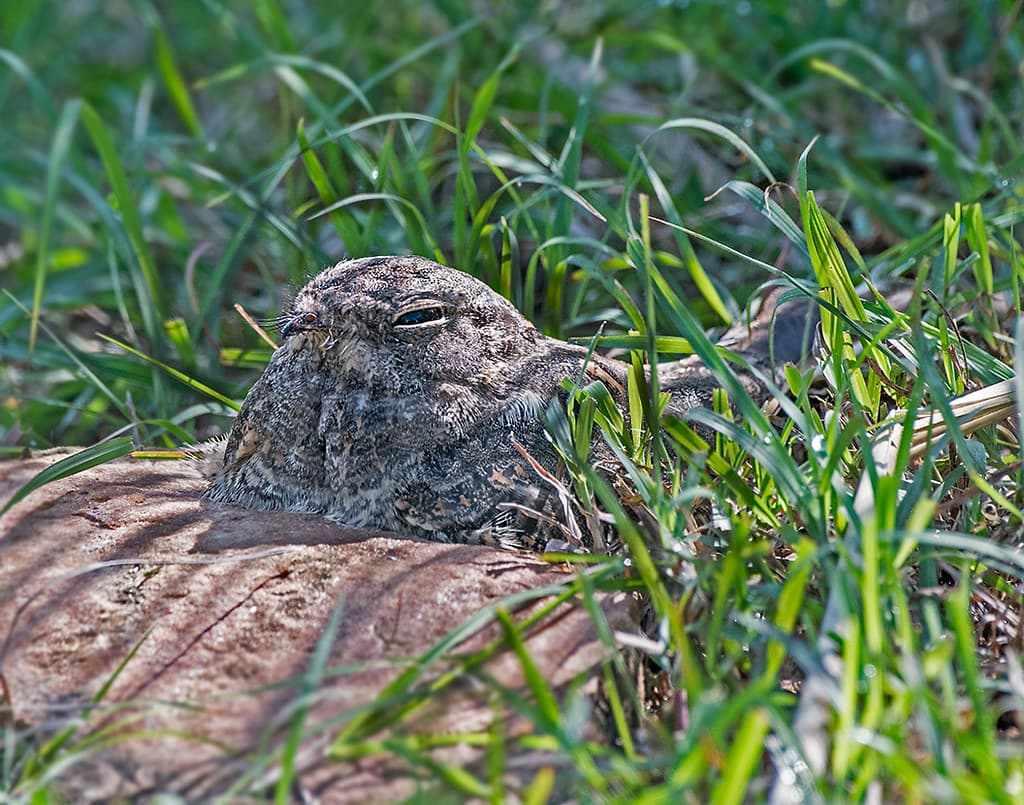
Savanna nightjars are around 25 centimeters long, with a wingspan of 64 centimeters. Their upperparts are brownish-gray and vermiculated with pale brown speckles, and their underparts are brown with bars. Not different from other nightjar species, this one also has a broad mouth that allows for easy prey capture. They usually feed on flying insects like beetles, flies, moths, and termites mid-flight during twilight hours. The savanna nightjar is one of the nightjar species that are common in South and Southeast Asia. They inhabit areas with scrub and open forests, and this is why habitat loss is one of their main threats.
Related Post: Owl Species In Cambodia
